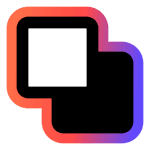SAARTHI
Project: India's first grassroots hemophilia care assistant
Description: Saarthi is a lightweight internal platform helping NGO workers track, coordinate, and respond to hemophilia care needs in low-tech areas.
Org: Hemophilia Federation — NGO with 1000+ field workers
Team: 1 PM • 4 Developer • 1 Designer (me!)
Timeline: September 2022 – March 2023
Role: Product Designer
(Research → IA → UX → UI → Prototyping → Testing)
Overview
What if we could bring structure, speed, and confidence to hemophilia care in India’s most underserved regions?
Hemophilia care in rural India is a high-stakes, low-infrastructure reality.
Information lives across WhatsApp chats, paper diaries, phone trees, or memory. Emergencies often require 20+ minutes of manual coordination. There was no lightweight, offline-friendly digital tool that matched the real workflows of NGO field volunteers.
This gap — between complex hospital systems and the everyday tools of grassroots workers — became the starting point for Saarthi.
Solution
A SaaS, offline-first care assistant built for NGO workers managing hemophilia in remote regions.
✔ Track infusions in <60 seconds
✔ View a complete patient profile at a glance
✔ Trigger emergency alerts with GPS
✔ Generate care reports automatically
✔ Support low literacy with icons, colors, and simple flows
✔ Work offline, sync when connected
Outcomes
Saarthi has been deployed across 3 states, supporting 150+ rural hemophilia camps and thousands of volunteer–patient interactions.
Key Impact Highlights
84% faster emergency coordination (20+ min → <180 seconds)
60+ seconds infusion logging (previously 5–7 mins)
2× more accurate patient data due to consolidated histories
Higher volunteer confidence in tracking care and reporting
Initial observations and prototypes
My first week began with field visits.
I shadowed 12 NGO volunteers across 5 hemophilia camps in Rajasthan and Delhi.
What I saw:
Records scattered across paper, WhatsApp, and memory
No standardized workflow
Volunteers improvising with voice notes, sticky notes, phone calls
Major reliance on personal judgment rather than system support
Emergency response was slow and chaotic
The gap was obvious:
Existing health systems were built for hospitals — not for grassroots India.
Becoming My Users
I didn’t know much about hemophilia when I joined.
So I learned — deeply.
I assisted volunteers in logging an infusion manually.
It took 5+ minutes, multiple fields, and a lot of friction.
Seeing the anxiety around “missing something important” completely reframed the problem for me.
I didn’t want to design for volunteers.
I wanted to design with them.
I didn’t know much about hemophilia..
So I learned…
Pain Points
1. Tools weren’t designed for them
Hospital systems were English-heavy, complex, and required training volunteers never received.
2. Information was disconnected
Infusion history → in diaries
Emergency notes → on WhatsApp
Patient details → in memory
No single source of truth.
3. Emergency response was slow
Help required manually calling 4–6 people in a chain.
Critical minutes were lost.
Field Insights
During shadowing, one volunteer said:
“If the patient bleeds, I just start making calls… whoever picks up first decides the plan.”
This wasn’t a system.
This was improvisation.
That moment became our design anchor.
Market & Context Research
Design Process
Usability Testing & Iteration
We tested clickable prototypes in Hindi and Tamil with 150+ NGO workers (literacy range: class 6 to graduate-level).
Top insights that shaped the product:
Starting With The Patient Summary
We designed the profile to be:
Color-coded by severity (mild/moderate/severe)
Tappable summary tiles for infusion frequency, last visit, aid status
Minimal text + icon-based cues
MVP 1
Core Modules
After a design jam and journey mapping session, I distilled the tool into
6 field-friendly modules:
🔹 Patient Profiles – Demographics, diagnosis, severity tag, assigned center
🔹 Infusion Log – Quick tap to log dose, factor batch, time, admin method
🔹 Emergency Assist – One-tap alert with GPS + auto-notify coordinator
🔹 Aid & Insurance – Pre-filled PM-JAY forms, Aadhar uploads, real-time status
🔹 Volunteer Log – Route planner, visit checklists, visit time
🔹 Reports – Auto-generated PDFs of treatment status and vial inventory
“ Saarthi isn't just a system—it's a reliable partner in the journey of hemophilia care, bringing confidence and coordination to the people who need it most.. ”
~Pawan
CEO,| Hemophilia Federation India
Reflections
Designing for constraint is liberating
What seemed like limitations (low-end phones, no Wifi) helped us strip things to the essential and users loved the simplicity.
Localisation isn’t just translation
Icons, field names, even button positions mattered. We tested designs in Hindi and Tamil, which brought huge usability insights.
Advocating for design in NGOs
Working with an operations-led team meant pushing for design-led decisions. Sharing usability test recordings helped win buy-in.


























